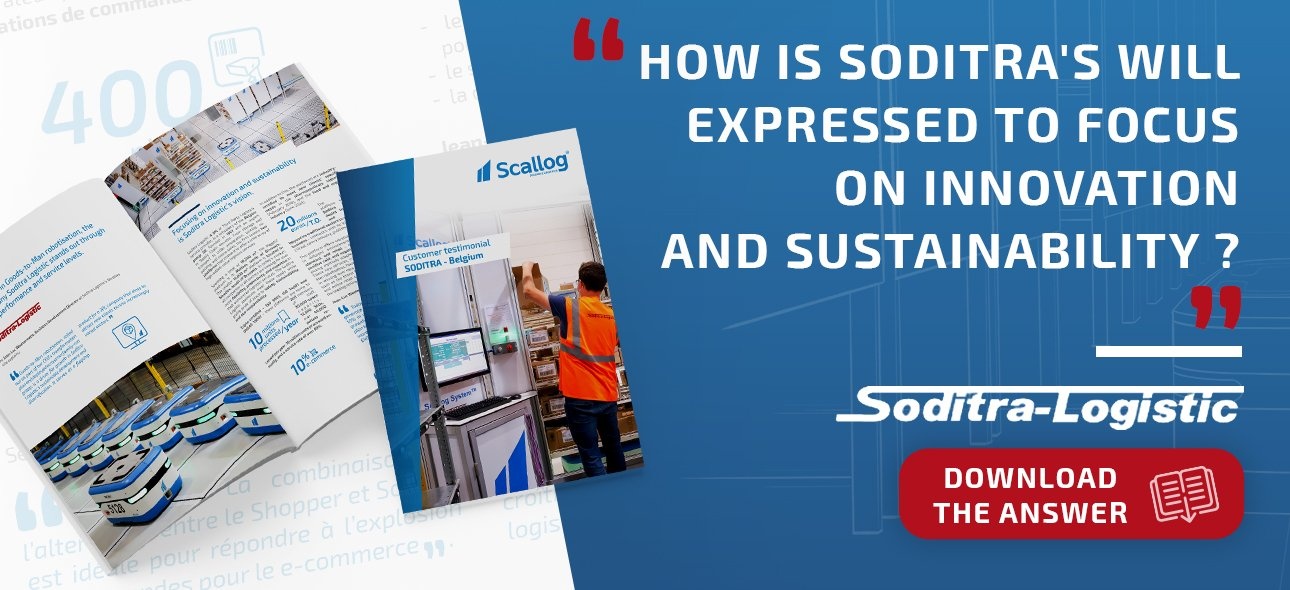Decentralization in the supply chain sector has led to the emergence of small urban distribution centres that manage the preparation of orders as close as possible to the end consumer.
We call these hubs “micro-fulfilment centres” (or micro-logistics hubs), or even “nano-fulfilment” in the case of the very smallest.
Faced with the previous crisis and the rapid growth of e-commerce, online vendors are increasingly joining this logistics trend in their attempts to get closer to their customers and deliver orders as quickly as possible.
So what exactly are these micro-fulfilment centres? What are their defining characteristics, and how can they be a real advantage for your company?
Scallog tells you all about this brand new form of automation below.
What is micro-fulfilment?
Micro-fulfilment is a logistics model used by e-commerce companies.
In the USA, micro-fulfilment is a term associated with supermarkets and primarily designates order picking at the point closest to the consumer, regardless of the size of the distribution centre.
In Europe, the definition includes not only proximity to the end customer but also the fact that orders are prepared in a confined storage space.
To limit our analysis to the European market, 40 to 50% of companies using this order-picking model are in the agri-food sector.
However, any type of product can be processed by micro-fulfilment. Only extremely bulky items cannot be accepted.
Much smaller than traditional retail distribution centres, European micro-fulfilment centres owe their efficacy to various kinds of automation solutions (conveyors, stacker cranes, mobile robots).
By way of example, Farmy is a Swiss e-food provider (100% of its market is online) that has converted a former wine cellar in the heart of Zurich into a micro-fulfilment centre.
The aim is to ensure deliveries to local consumers within a space of 24 hours, combined with an eco-responsible delivery method: electric vans.
The company uses Scallog’s automated lexypick solution to accelerate order picking with mobile robots.
Testimonial of Roman Hartmann (co-founder of Farmy)
Micro-fulfilment centres primarily consist of two elements:
- physical infrastructure, including an automated solution.
- and software, which processes orders placed online.
These small urban distribution centres are characterized by:
- their small size (maximum 1000 m²)
- their use of automated storage and retrieval systems
- their proximity to urban consumers, thanks to their location on the outskirts or in the heart of cities
Micro-fulfilment centres are laid out to enable preparation of a large number of orders containing a small number of items, there by responding to the requirements of an increasingly demanding clientele.
In the same spirit of customer satisfaction, after consumers have placed their orders online they can opt between home delivery or collection from the store (click & collect).
How and why to apply the micro-fulfilment model
The easiest way to set up a micro-fulfilment centre is to convert existing spaces in commercial premises (back shops, storage areas in supermarkets, basements, vehicle parking zones etc.).
Space already available is optimized and online orders are prepared as close as possible to the customer.
.png?width=1200&name=Microfulfilment%20(5).png)
Thanks to automation, the micro-logistics concept guarantees rapid order picking with a reduced error rate.
Whether they’re located in small urban sites or at the back of physical stores, micro-fulfilment centres are designed to reduce delivery times for online orders.
E-commerce heavyweights like Amazon offer ever-shorter delivery times for online purchases. The competition has no choice but to follow the example , getting orders to the consumer in hours rather than days
To deliver as quickly as possible, large warehouses located outside urban centres serve smaller local distribution centres or micro-fulfilment centres.
The products are thus brought closer to the end consumer in urban areas.
Because of their urban location, these order picking platforms also allow click and collect, where a consumer places his order online and then retrieves his order in person from the physical facility. In some cases, micro-fulfilment also permits more environmentally friendly deliveries, via e.g. electric vans or bicycles
In fact, companies like Urb-it, whose delivery staff work use bicycles, have set themselves the task of reducing the carbon footprint of the logistics sector by opting for greener means of transport.
Advantages and disadvantages of micro-fulfilment
As micro-fulfilment centres bring companies closer to their end customers, it enables faster deliveries and helps improve the efficiency of omnichannel logistics through the contribution of an automation system.
-1.png?width=1367&name=Microfulfilment%20(7)-1.png)
But the micro-fulfilment phenomenon also has disadvantages for businesses.
Property costs in cities are particularly high. Even in renovated spaces (the case of Farmy in Zurich), installation costs are high.
Micro-format order-picking sections at the back of bricks-and-mortar stores are unable to process the same quantities as out-of-town warehouses.
To rise to the omnichannel challenge in a manner appropriate to small logistics platforms, micro-fulfilment therefore requires the use of new logistics technologies - and this is where Scallog comes in.
Micro-fulfilment: flexibility is crucial
As micro-fulfilment is based on a customer proximity model which reduces costs and distances travelled (to the distribution centre and the delivery run itself), goods to man technology is the most cost-effective option.
Flexibility is the watchword in a micro-fulfilment centre.
In a study on the global supply chain automation market, Interact Analysis says that approximately 7,300 automated microfillment centers (MFCs) will be installed by 2030.
.png?width=1200&name=Microfulfilment%20(1).png)
The stated objective of micro-fulfilment is to get everyday consumer products to households in the simplest possible way. The future of local commerce therefore seems closely linked to that of e-commerce.
Things are moving at such a pace that many organizations have been forced to implement omnichannel logistics solutions that are flexible and responsive enough to adapt to new consumer purchasing patterns. Micro-fulfilment offers precisely this flexibility.
Les choses avancent à un rythme tel que les organisations sont soumises à la mise en place d'une gestion logistique omnicanale, particulièrement souple et réactive pour s'adapter à la nouvelle façon dont les consommateurs achètent. Une flexibilité qu’offre le micro-fulfillment.
So it looks like we’ll all be getting used to seeing these small distribution centres blossom in our cities.





Laisser nous votre commentaire